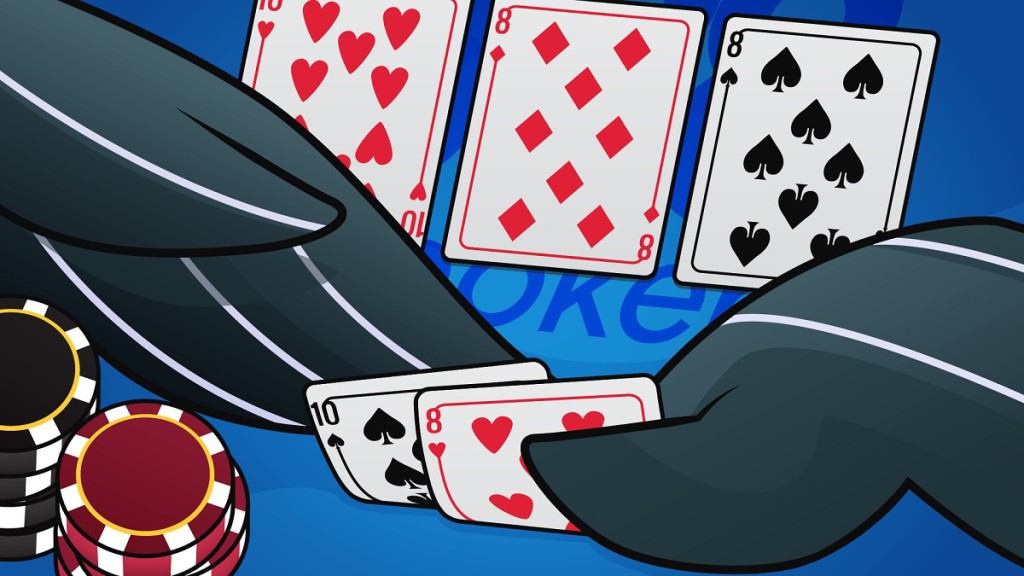What is a full house?
A full house is a five-card hand consisting of three of a kind and a pair. It ranks above a flush, but below four of a kind.
Full houses, or ‘boats’ as they’re also known, are one of the most powerful hands you can make in poker, only bettered by quads or straight flushes. They’re ranked first by the three of a kind part, and then by the pair that completes them. So, for instance, Threes full of Twos (3-3-3-2-2) beats Twos full of Aces (2-2-2-A-A).
Flopping a full house is very rare so most of the time you get one it’ll be because you make a set, trips or two-pair on the flop, and then turn or river the boat to drown your opponent.
There are many different ways to make a full house but all emanate from two different beginnings. You either have a pocket pair or two unpaired cards. If you have a pocket pair there are a couple of ways you can make a full house. If you hold a pair such as 8-8 you can flop one on a board like 6-6-8 or 5-5-5. But beware that in the second example any pair higher than Eights has you crushed.
Another way to make a full house with a pair in the hole is to flop a set – 9-9 on a board like 9-5-3 – and then the turn or river bringing a Three or Five. A variation on this theme is to hit running cards of the same denomination, such as on a board of 9-5-3-4-4, which would also fill up your hand.
Other options
Should you start with a hand such as J-10 there are myriad ways to make a full house. You can see a dream flop of J-J-10 or 10-10-J, or the board could run out so that one of your hole cards is not needed, e.g. on a board of 7-7-7-J-2. Alternatively, you could flop two-pair with, say, Q-8 on an A-8-Q board, and then hit one of your four outs (another Queen or Eight) on the turn or river. And you could even flop trips and fill up on the turn or river if, for example you hold A-5 and the board reads 5-5-K-J-A.
Despite there being plenty of ways to make full houses, they don’t come around too often. Your primary aim when you make one, then, is to make sure you win a big pot. And you can do this in a number of ways…
Getting paid
The equation of how to get paid with a full house boils down to maximizing value versus worse ‘made’ hands. The main decision rests on whether you should play your hand fast or slow…
When deciding this there are many factors to consider, such as how many players are in the pot and how strong you think your opponent(s) are. If you limp into a pot with 4-4 and five players see a flop of 4-A-A it’s a safe bet that someone has an Ace and you can go about building a pot by betting and hoping to get raised.
If the pot is heads-up on a flop of 8-3-3 and you are the pre-flop aggressor with 8-8, then you have options. The default option here is to slow-play on such a dry board, but to keep a balanced strategy you can’t always play your monsters the same way. Leading out is a good option against aggressive players who will think you’re making a standard continuation bet and raise you. Against passive opponents, though, you might choose to check and allow them to catch up. All options are open, but remember the two main things to consider when giving an opponent a free card and a chance to catch up are: will you actually get any more chips out of your opponent(s) by feigning weakness if they miss on subsequent streets? And of all the possible cards to come, how many are blanks, how many will help your opponent and induce a bet, and how many will kill your action, both by scaring your opponent and yourself?
One time when you should definitely make sure you maximize your value is when you’re pretty certain someone holds an overpair to the board. If you have 6-6 on a 9-9-6 flop, and you put your opponent on Aces or Kings, the perfect play is to bet out, say, half-pot and hope your opponent comes over the top with their ‘monster’. Most of the time in this spot all the chips are going in the middle and your opponent is drawing to two outs.
The all-in overbet
If your opponent is still around at the river after some big betting, he’s probably got a very strong hand. The urge to value-bet and guarantee a call is strong, but a great option is to make an all-in overbet. If you have 4,000 chips left and the pot is 3,000, betting 1,000 will almost always get a call, but moving all-in for 4,000 may offer greater expectation in the long-term. The bet only has to get called about 25% of the time for it to be more profitable than the small value bet.
The stats
What is the chance of flopping a full house? 0.09%
You have a hand such as 10-9 – how often will you flop two-pair? 2.02%
The chance of making a full house or better when you flop a set? 33.4%
How often will you improve to a full house if you make two-pair on the flop? 16.74%
Tagged with: beginner strategy • Cash Games • how to play • poker strategy



One Response to “How to Play a Full House”
Comments are closed.